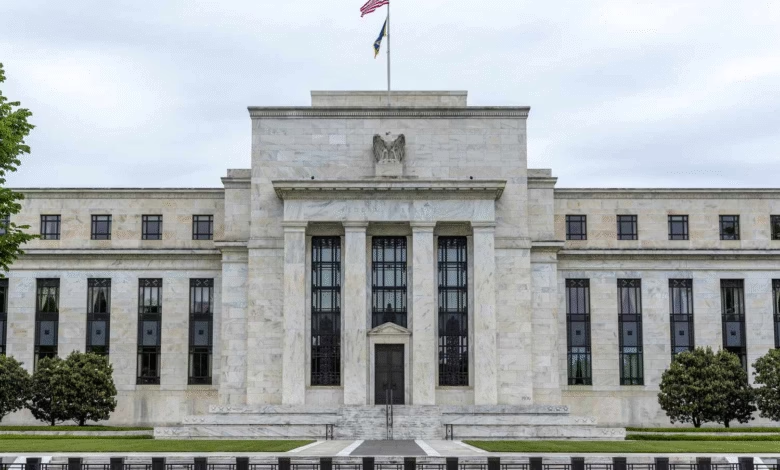The Federal Reserve’s Role in Market Volatility
Understand what the Fed is and how it influences the financial market

On certain days of the year, the entire financial world holds its breath. Trillion-dollar investment firms, seasoned Wall Street traders, and everyday investors all stop and listen as a single person steps up to a podium in Washington D.C. That person is the Chair of the Federal Reserve, and their words have the power to send the stock market soaring or send it into a nosedive within seconds.
But who is the Fed, really? And how can a small group of economists wield so much influence over your 401(k) or brokerage account? The Federal Reserve, or “the Fed,” is the central bank of the United States, and its actions are arguably the single most powerful force driving stock market volatility. It acts like a form of financial gravity, and when that gravity shifts, everything in its orbit, including your portfolio, gets pulled along for the ride.
This guide will demystify the powerful relationship between the Fed and the market. We will break down the tools the Fed uses, explain exactly how its decisions ripple through the economy to impact stock prices, and provide you with a clear-eyed strategy for navigating the volatility it creates.
Who Is the Federal Reserve and What Is Its Purpose?

Before understanding its impact, we need to know what the Fed actually is. Established in 1913, the Federal Reserve is the central banking system of the United States. While it has many responsibilities, its primary mission is guided by a dual mandate from Congress:
- To promote maximum employment.
- To maintain stable prices (which means controlling inflation).
Think of the Fed as the pilot of the massive U.S. economy. Its job is to keep the economic engine running smoothly—not too hot (which causes high inflation) and not too cold (which leads to a recession and job losses). This constant balancing act is the source of its immense power and the primary reason it creates so much uncertainty and volatility for investors.
The Fed’s Toolkit: How Does It Steer the Economy?
The Fed doesn’t directly control the stock market, but it has a powerful set of tools that influence the cost and availability of money for the entire country. These tools are what send shockwaves through Wall Street.
1. The Federal Funds Rate (The Main Lever)
This is the Fed’s most important and frequently used tool. The federal funds rate is the interest rate at which banks lend money to each other overnight. While you don’t pay this rate directly, it’s the foundation for almost every other interest rate in the economy.
- When the Fed raises the federal funds rate, it becomes more expensive for banks to borrow. They pass this cost on, leading to higher rates on mortgages, credit cards, auto loans, and business loans. This acts like a brake pedal on the economy, designed to slow things down and fight inflation.
- When the Fed lowers the rate, borrowing becomes cheaper, encouraging spending and investment. This acts like an accelerator for the economy, designed to stimulate growth and employment.
2. Quantitative Easing (QE) and Quantitative Tightening (QT)
This is a more complex but equally powerful tool. During times of crisis, the Fed can engage in Quantitative Easing (QE), where it buys massive amounts of government bonds and other securities from the open market. This injects trillions of dollars of new money into the financial system, pushing long-term interest rates down and encouraging risk-taking. It’s often described as the financial equivalent of “printing money.”
The opposite is Quantitative Tightening (QT), where the Fed allows those bonds to mature without reinvesting the proceeds, effectively removing money from the financial system. This has a tightening effect, similar to raising interest rates.
3. Forward Guidance (The Power of Words)
In the modern era, what the Fed says is almost as important as what it does. Forward guidance is the communication strategy the Fed uses to signal its future intentions to the market. Through press conferences, speeches, and the release of meeting minutes, the Fed gives clues about whether it plans to raise, lower, or hold interest rates. Investors and algorithms scrutinize every single word, looking for hints about the future path of monetary policy.
Why Do the Fed’s Actions Cause So Much Market Volatility?

The stock market hates uncertainty, and the Fed’s balancing act is a constant source of it. The connection between the Fed’s tools and stock prices is profound and multi-layered.
1. The Direct Impact on Stock Valuations
The theoretical value of a stock is the present value of all its expected future profits. To calculate this, analysts use a “discount rate” to determine what those future profits are worth in today’s dollars. This discount rate is heavily influenced by the “risk-free” interest rate set by the Fed.
- When the Fed raises interest rates, the discount rate goes up. This mathematically reduces the present value of a company’s future earnings, making its stock worth less today, even if the company’s business outlook hasn’t changed. This effect is especially brutal for high-growth tech stocks whose valuations are based on large profits expected far in the future.
2. The Competition from “Safe” Investments
Investing is all about choices. When the Fed holds interest rates near zero, the return on safe assets like government bonds is pitiful. This creates a “There Is No Alternative” (TINA) environment, forcing investors into the stock market to seek decent returns.
- But when the Fed raises rates aggressively, suddenly that “boring” 2-year Treasury bond might yield 4% or 5% with virtually zero risk. This creates a “There Are Reasonable Alternatives” (TARA) situation. Why risk your money in a volatile stock market when you can get a guaranteed return elsewhere? This causes a massive flow of capital out of stocks and into bonds, causing stock prices to fall.
3. The Squeeze on Corporate Profits and Consumer Spending
Higher interest rates are a direct headwind for business.
- For Companies: The cost of borrowing to fund expansion, research, or operations goes up. This increased interest expense eats directly into profits.
- For Consumers: Monthly payments on mortgages and credit cards rise, leaving households with less disposable income. This leads to a slowdown in consumer spending, which hurts the revenues of retailers, automakers, and travel companies.
When both corporate profits and consumer spending are under pressure, the overall outlook for the stock market darkens, leading to sell-offs.
4. The Market’s Reaction to Surprise
The stock market is a forward-looking machine. It is constantly trying to predict the Fed’s next move. Analysts and investors build complex models based on the Fed’s forward guidance, and these expectations get “priced in” to the market.
Volatility explodes when the Fed deviates from these expectations.
- If the market expects a 0.25% rate hike, but the Fed announces a 0.50% hike, it signals that the Fed is more worried about inflation than previously thought. This surprise causes a violent market reaction.
- If the Fed Chair uses unexpectedly aggressive (“hawkish”) language in a press conference, the market will re-price assets downward in seconds. Conversely, softer (“dovish”) language can spark a rally.
This is why the market is often more volatile in the days and hours leading up to a Fed meeting, as traders place their bets on the outcome.
The Fed’s Tightrope Walk: Why Can’t It Just Keep the Market Happy?
Investors often wish the Fed would just keep interest rates low forever to support stock prices. But the Fed doesn’t work for the stock market; it works for the U.S. economy, guided by its dual mandate.
This often puts it in a terrible bind.
- To fight high inflation, it must raise rates and slow down the economy, which is almost always painful for the stock market.
- To fight a recession and high unemployment, it must lower rates and stimulate the economy, which can risk igniting inflation down the road.
This constant tightrope walk between controlling inflation and promoting growth is the fundamental reason the Fed is an enduring source of market uncertainty and volatility.
Navigating the Tides: What This Means for Your Portfolio

You cannot control the Federal Reserve, but you can control how you react to the volatility it creates.
- Don’t Fight the Fed: This is a classic Wall Street adage for a reason. When the Fed is in a determined rate-hiking cycle, it’s a major headwind for stocks. It’s a time for caution, not for taking on excessive risk.
- Focus on the Long Game: Don’t try to day-trade Fed announcements. The short-term reactions are unpredictable and best left to professional traders. Your focus should remain on your long-term financial goals. A single rate hike is just a blip on a multi-decade investment journey.
- Prioritize Quality: During periods of rising rates, companies with strong balance sheets, low debt, and consistent cash flow are best equipped to weather the economic storm.
- Embrace Diversification: A well-diversified portfolio is your best defense against volatility. While rising rates may hurt growth stocks, they might be less damaging to value stocks or certain sectors like financials. Owning a mix of assets can smooth out the ride.
The Conductor of the Financial Orchestra
The Federal Reserve is the powerful, and often unpredictable, conductor of the U.S. economic orchestra. Its decisions on interest rates set the tempo for the entire financial system. By making money cheaper or more expensive, it can encourage a symphony of growth or command a slowdown to quiet the noise of inflation.
For the average investor, the key is not to try and guess the conductor’s next move. The key is to build a portfolio that is resilient enough to withstand changes in tempo. By understanding the profound role the Fed plays, you can better contextualize the market’s wild swings, manage your own emotional responses, and stay focused on the long-term harmony of your financial plan.





